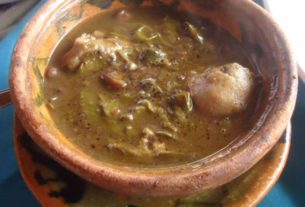Mexican History
Mexico is an endlessly fascinating country for those who take the time and trouble to delve a little more deeply into the mysteries of our “Unknown Mexico.” Dedicated amateurs and professional scholars alike have produced countless articles and books on almost every facet of Mexican culture and history past and present. It would seem that there is little left to add. In this column, however, we shall ask the following questions. How do we really know what we know (or think we know) about the ancient civilizations of Mexico? How did the Maya, Aztecs, Mixtecs and others actually see the world around them? To what extent can we reconstruct the world in which they lived? Can we really comprehend or appreciate their view of the universe? Finally, what bearing does all of this have on our understanding of Mexico and its people today?
Some aspects of human experience are universal, but the way in which they are expressed may differ greatly from one society or culture to another. Ancient Mesoamerican civilizations present much that is strange, even bizarre, to our way of thinking. Closer examination, however, reveals too the common or universal features as well as the linguistic and cultural differences. The spectrum of colors, which is an example of one such universal feature, is actually a continuous band which we somewhat arbitrarily divide into discrete units by assigning particular names to each ‘color.’ The actual color remains the same regardless of the way in which we describe it. In our own language we associate the color green with jealousy or envy. The ancient Quiche Maya equated ‘whiteness’ with ‘book’ or ‘tribe.’ In the famous Popol Vuh of the Quiche, the book itself is associated with ‘the white (bright) things that come from the sea.’ This metaphor is central to Quiche religion. In this column we shall be looking at these particular cultural features as well as the universal elements of meaning we all share.
This column will focus on the main areas of Mesoamerican civilization: the Olmec (Pre-Classic), Teotihuacán (Mid-Classic) and Xochicalco (Late-Classic), Nuiñe (Mixtec), Zapotec, Classic Vera Cruz, the Chiapas-Guatemala-Highland area, Classic Maya, and Puuc (Late-Classic in Yucatan), including the Post-Classical Period (AD 900-1521) and the Spanish Conquest and its aftermath. Comparative ethnological studies of indigenous peoples in Mexico today also add to the over-all picture.
Mexico retains very strong ties with the past. To illustrate this cultural continuity, we shall be examining the pre-Hispanic origins of many customs, traditions, and fiestas in present day Mexico. For example, the Huichol Indians of Jalisco and Nayarit have managed to preserve more of their pre-Hispanic religion and world outlook than almost any other indigenous peoples of the Americas.
For convenience, historians and archaeologists customarily divide history into fairly definite time periods. This chronology enables us to place historical events in their logical time sequence. However, while these chronological divisions provide a general time line or overview of historical events and personages, they do not necessarily reflect accurately the actual experiences of the people who lived through those times. Students are sometimes encouraged to learn the “correct” dates of history in proper order. But this approach can be misleading in dealing with a different cultural concept of time and history, such as that of the ancient Maya or Aztecs. It will be useful, therefore, to examine scientific, cultural, and personal definitions of time in relation to pre-Hispanic concepts of time and history.
Prescott’s The Conquest of Mexico is probably the most popular introduction to the ancient civilizations of Mexico. Unfortunately, it is also extremely biased and, like many other books and articles on the subject, in some respects, quite misleading. Academic books and articles, on the other hand, usually contain too much technical detail for the average reader. Moreover, much of the relevant source material is buried in learned journals and university or research archives accessible only to a handful of professional researchers. This sometimes leaves the general reader at the mercy of writers whose credentials may or may not inspire confidence. Therefore, whenever possible, I shall refer to the source materials used in an article. Readers will then be in a better position to judge for themselves.
In the search for the origins of pre-Hispanic peoples of the Americas, alternative historians have come up with many fanciful speculations and untested theories, which, while extremely popular, do little to further our understanding or knowledge. It is too easy to jump to premature conclusions based on scanty evidence or poor research methods. Personally, I would not be particularly disturbed to learn that the person represented on the lid of the sarcophagus in the Temple of Inscriptions at Palenque really was an ancient astronaut, as some have claimed. However, until some of these revisionist or alternative historians present much more convincing evidence for their theories, it is probably safer and more useful to deal with the more obvious evidence at hand.
The discovery of spectacular “lost” cities in the jungles of Chiapas, Yucatan, and elsewhere led to the early fascination with the ancient civilizations of Middle America. Researchers and travelers converged on Chichén Itzá, Tikal, and other now famous archaeological sites. Much is owed to these intrepid “dirt” archaeologists, who first endured hardships to record and preserve some of the former glory of these ancient cities. But without some kind of recorded history, even the most spectacular artifacts or buildings tell us relatively little about the people who created and used them. However, recent advances in the decipherment of the Maya script and new interpretations of the Mixtec-Aztec codices have brought to life many historical personages, kings and queens, and shed new light on their lives and deeds.
Archaeology remains a fundamental source of knowledge about the ancient civilizations of Mexico. But it is only one of many sources. Whenever possible, I shall refer to the pre-Conquest pictorial manuscripts from the Maya region, Central Mexico, and Western Oaxaca, as well as post-Conquest native colonial manuscripts. Non-codical sources include Maya hieroglyphic inscriptions, ceramics, pictorial elements in the codices, and painted murals.
Written prose sources in the native historical tradition obviously presuppose a post-Conquest date after the introduction of Roman characters into the writing system. However, some of the early texts written in Nahuatl and Maya were evidently based on original pre-Hispanic pictorial and hieroglyphic manuscripts. Written sources available to us also include both secular and religious Spanish and Mestizo chroniclers. Indeed some of the early chroniclers of New Spain, like the Franciscan Fray Diego Duran, or the Aztec chieftain, Ixtlilxochitl, must also be considered primary sources of pre-Hispanic history.
The Maya, Aztecs, Mixtecs and others obviously had a very different concept of history from our own. They combined what we tend to regard as legend or even mythology with a truly strong sense of time and history. Before we dismiss native American historical accounts as naive or misguided, we need to look more closely at the meaning of history and alternative methods of recording it. The Greeks were probably the first to invent historical writing, at least as we know it, and the Romans carried it a stage further. But there are other cultural concepts of history. Irish (pseudo) history is an elaborate reconstruction of Celtic history before verifiable historical dates. By way of contrast, little emphasis was placed on history in ancient India. In this regard the importance of oral history cannot be underestimated. In his war commentaries, Caesar reported that the Celtic Druids spent as long as twenty years memorizing their traditional lore because they distrusted writing. The Mesoamerican concept of history is simply one more cultural type.
Epic poems and sagas, which are found at early periods in almost every society known to us, are often based on actual historical events. Epic or heroic narrative therefore can tell us a great deal about what people actually thought about their own past. This is sometimes more important than what actually happened. As the Mexican Nahuatl scholar, A. Garibay, and others have suggested, it is likely that the Aztecs and the Maya in particular had their own form of epic narrative. Here we have a wealth of material in Nahuatl, Yucatec, and Quiche Maya. In the final section of the Popol Vuh (“Book of Counsel”), which tells of the origin of the Quiche people of Guatemala, Quiche “mythology” and history are mingled together in a sustained heroic epic narrative of considerable dramatic force.
The story of the migration of the Mexica, later the Aztecs, from the semi-historical, semi-legendary Aztlan to the historical founding of Mexico-Tenochtitlan can be reconstructed, at least in part, from a series of Nahuatl manuscripts, some in the form of heroic narrative. Mexico too had its ancient Heroic Age. In this column we shall attempt to see history as the Maya, Aztecs, and others saw it before, during, and after the arrival of the Spaniards.


